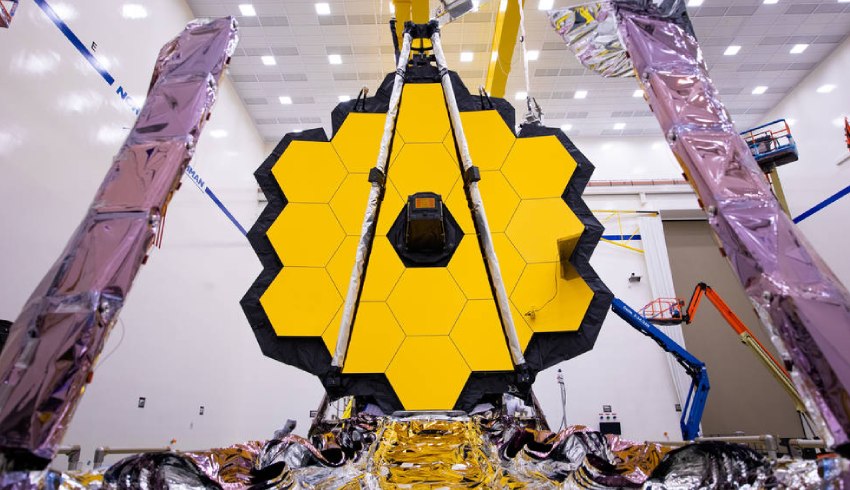
Controllers will now spend the next five months cooling the instrument down, focusing its mirrors and tuning it to be ready to undertake its first scientific experiment and deliver its first image.
James Webb successfully blasted off from French Guiana on Christmas Day and had to navigate past 344 individual actions before its launch was deemed successful.
Its final hurdle was the deployment of its 21-foot, gold-coated primary mirror made up of 18 segments – measuring at 6.5 metres – to observe galaxies over 13 billion light-years away.
Webb then used three course-correction burns to navigate to Lagrange Point 2 over its 29-day journey.
The resting place was chosen because it’s one of five gravitational "sweet-spots" around the sun and Earth where satellites can easily hold their position.
It also doesn’t experience big swings in temperature and light – vital as Webb requires extremely cold conditions of around minus 230 degrees Celsius to view the Cosmos in infrared light.
Scientists hope using infrared light will allow them to look through dust and see stars otherwise obscured.
Astrophysicist Dr. Amber Straughn, who serves as the deputy project scientist for James Webb, told NASA’s Twitter channel that after the cooling down process the science can begin.
“We expect the first science images from JWT to come back in about five months and we can expect really spectacularly beautiful images,” said Straughn.
“But beyond that, the first year of JWT’s key science observations has already been planned, and we will be looking at things in the universe ranging from objects within our own solar system, all the way out to searching for the very first galaxies to be born after the Big Bang.”
The telescope will now circle Lagrange Point 2, keeping both the Earth and sun in an almost straight line.
“L2 is pseudo-stable,” said Jean-Paul Pinaud, who leads the Northrop engineers on Webb. “The flight operations team is preparing routine station-keeping burns. They'll be doing those every 20 days or so with the trajectory calculations provided by our flight dynamics team. We'll set them up in a similar way, and then fire the thruster. But the burns will be quite small.
The James Webb project began in 1989 and was due to launch two decades ago before a series of problems saw its original budget triple and delays kick in.
? Home, home on Lagrange! We successfully completed our burn to start #NASAWebb on its orbit of the 2nd Lagrange point (L2), about a million miles (1.5 million km) from Earth. It will orbit the Sun, in line with Earth, as it orbits L2. https://t.co/bsIU3vccAj #UnfoldTheUniverse pic.twitter.com/WDhuANEP5h
— NASA Webb Telescope (@NASAWebb) January 24, 2022
It is a US$10 billion collaboration between NASA, the European Space Agency, the Canadian Space Agency and French launch provider Arianespace.
Its mission – dubbed VA256 – has been in the making for 14 years and it’s hoped Webb will be able to reveal what the universe looked like 14 billion years ago.

Adam Thorn
Adam is a journalist who has worked for more than 40 prestigious media brands in the UK and Australia. Since 2005, his varied career has included stints as a reporter, copy editor, feature writer and editor for publications as diverse as Fleet Street newspaper The Sunday Times, fashion bible Jones, media and marketing website Mumbrella as well as lifestyle magazines such as GQ, Woman’s Weekly, Men’s Health and Loaded. He joined Momentum Media in early 2020 and currently writes for Australian Aviation and World of Aviation.
Receive the latest developments and updates on Australia’s space industry direct to your inbox. Subscribe today to Space Connect here.









